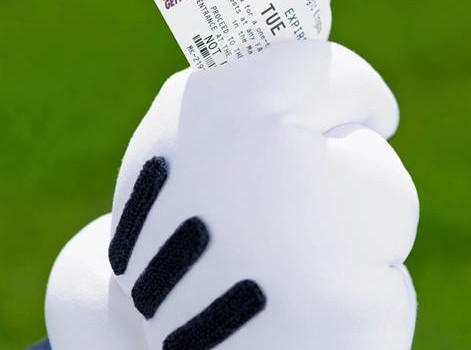Do you remember where you spent most of your time when you last visited a theme park?
Was it on the rides? Participating in the parades? Browsing the gift shop?
Chances are you spent more time waiting in line than actually enjoying the entertainment on offer. This is a problem for any business that deals with large volumes of people in a physical space – the more time people spend waiting in line, the less time they have to spend money at your venue and the less likely they will be to come back for another visit.
Somewhere beneath Cinderella Castle
Disney World handles over 30 million visitors a year, and in a world of growing impatience (led by the “get it now” expectations in the digital and mobile world), they have been forced to perfect the art of crowd control to a science. Somewhere beneath the Cinderella Castle, they have built a state of the art control room complete with the latest technology to solve crowding problems before they even occur.
If a line starts forming at the Pirates of the Caribbean ride, software algorithms causes the video surveillance screens to blink from green to yellow, and the control room can respond in real time by deploying more staff or launch more boats. In-line entertainment is another option, deploying Goofy and co. to distract the waiting crowds with games to make them forget they’re actually waiting. What if one ride is busy but another is empty? Simple – just deploy a dance-along parade that people can join that redirects crowds from busy areas to underutilised parts of the park.
Gazing into the crystal ball
The magic doesn’t stop with real-time response, but in fact can be used to predict the future – Disney World also forecasts ride and staff capacity based on weather data, hotel reservations, flight bookings and historical data.
The end goal is simple: maximise their yield by minimising wasted operational costs and controlling demand to maximise utilisation. The end result is of course a boost in profit, which can add up through the use of these small tweaks – just a few months after launching the control centre operation, Disney World had increased the average number of rides per customer by 11%, meaning more immediate revenue, more happy customers, and ultimately higher revisitation in the long run. In a $10.7 billion business, that translates to a lot of green.
This sort of real time response based on data has become standard practice in digital environments such as websites, but applying the same concept makes a lot of sense in the physical world. In order to keep pace, tourist attractions, museums, festivals, galleries, cruise ships and any other business built around physical spaces with large crowds will need to evolve with trends.
The days of relying on the pulling-power of Mickey and co. are over – those who survive in this increasingly competitive category will do so because of superior yield management, and the understanding to achieve this will come from integration of digital innovation into day-to-day operations. In the end, it will be data that separates the mice from the men.
For more info on Disney’s initiatives in this space, see the New York Times: http://www.nytimes.com/2010/12/28/business/media/28disney.html?_r=0














At Disney Sea in Japan – you reserve a spot in the line by collecting a ticket outside each ride. The ticket tells you what time to come back, and when you do, you literally walk past everyone else who decided to not reserve a spot, and walk straight to the front.Yes, you usually have to wait an hour for the ride – but you don’t have to stand in line, you can go sightseeing or go on a less popular ride in the meantime. It’s a really clever way to get the most out of your day!
Some airports have a concierge service available where you can pay for someone to wait / line up for you and simply grab you at the last minute so you board the plane and the doors close behind you (useful for celebrities who don’t want to be sitting in their seat being harassed by boarding passengers).
Has anyone else seen an innovative use of technology to minimise wait times?
Does this count..?
https://plus.google.com/+MayFongRobinson/posts/ba2GYyx51sk
In Hong Kong you can drop your bags off for your flights before getting on the Airport Express train from the center of town, so you save time at the airport and you don’t have to lug your luggage around. From memory you can even drop it off the day before if you don’t need it.
http://www.mtr.com.hk/eng/getting_around/complom_checkin.html#itci